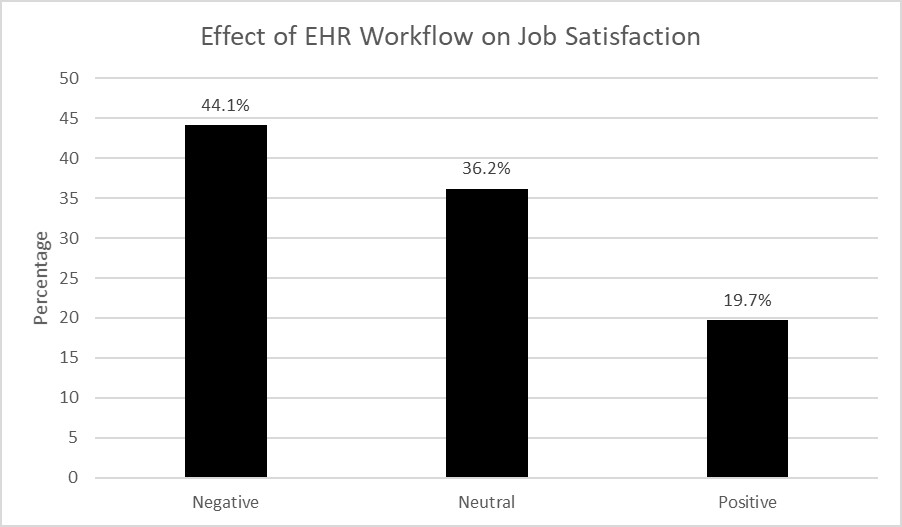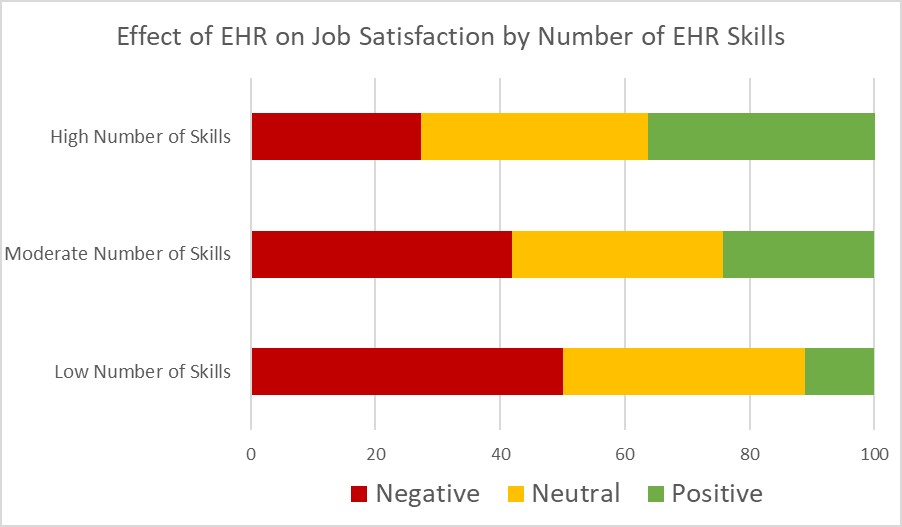Telemedicine/EHR/Medical Informatics
Category: Abstract Submission
Telemedicine/EHR/Medical Informatics II
297 - Effects of the Electronic Health Record on Job Satisfaction of Academic Pediatric Faculty
Sunday, April 24, 2022
3:30 PM - 6:00 PM US MT
Poster Number: 297
Publication Number: 297.347
Publication Number: 297.347
Abigail M. Kissel, University of Texas Southwestern Medical School, Dallas, TX, United States; Katherine Maddox, University of Texas Southwestern Medical School, Dallas, TX, United States; Christoph U. Lehmann, UT Southwestern, Dallas, TX, United States; Rinarani M. Sanghavi, University of Texas Southwestern Medical School, Dallas, TX, United States; Jenny Francis, University of Texas Southwestern Medical School, Dallas, TX, United States; Devika R. Rao, University of Texas Southwestern Medical School, Dallas, TX, United States; Christopher Menzies, CHST, Dallas, TX, United States; Marlon I. Diaz, University of Texas Southwestern Medical School, Dallas, TX, United States

Katherine Maddox, MD (she/her/hers)
Palliative Care Physician
University of Texas Southwestern Medical School
Dallas, Texas, United States
Presenting Author(s)
Background: In the United States, most pediatric health care requires documentation in and support by Electronic Health Records (EHRs). However, many EHRs lack the functionalities for pediatric care to be conducted and documented seamlessly. Not all organizations have the training resources to support users with skill acquisition or optimization of EHR features including pediatric functionality. As a result, dissatisfaction with EHRs has been a significant contributor to burnout among healthcare providers. Among pediatricians, poor EHR functionality and associated high EHR burden have decreased job, career, and life satisfaction and create measurable work-life balance challenges.
Objective: To evaluate the association of Electronic Health Record (EHR) skills and available support with job satisfaction for pediatric faculty at a large academic institution. To identify key opportunities for improvement.
Design/Methods: Cross-sectional study of 343 pediatric academic faculty using a REDCap survey to inquire about faculty EHR skills, support services, and associations between EHR workflow and job satisfaction. Final sample size was 127 participants (37%). Results were analyzed using bivariate testing.
Results: 7% of respondents had none of the EHR skills queried and few felt that initial training (35%) or the Information Technology department (26%) were useful in acquiring skills. Of eight categories of EHR functionality, only one had satisfaction rated over 55%. The majority rated the effect of EHR workflow on job satisfaction as neutral (36%) or negative (44%). Users with more skills were more likely to indicate a positive effect of the EHR on overall job satisfaction (p=0.019). Two similar divisions, one with and one without Physician Builders (PBs), had statistically significant different EHR satisfaction ratings (p=0.0012).Conclusion(s): Most faculty indicated a negative/neutral effect of the EHR on their overall job satisfaction. Users who indicated more EHR skills had a higher satisfaction rating. Existing training and support were not seen as helpful. The division with the most PBs ranked highest in satisfaction. We speculate that 1) adding EHR skills could increase overall job satisfaction and 2) adding PB resources could increase skills and satisfaction. This study is limited in its generalizability due to its small sample size and restriction to one location.
Effect of EHR on Job Satisfaction
Effect of EHR on Job Satisfaction by Number of EHR Skills
Objective: To evaluate the association of Electronic Health Record (EHR) skills and available support with job satisfaction for pediatric faculty at a large academic institution. To identify key opportunities for improvement.
Design/Methods: Cross-sectional study of 343 pediatric academic faculty using a REDCap survey to inquire about faculty EHR skills, support services, and associations between EHR workflow and job satisfaction. Final sample size was 127 participants (37%). Results were analyzed using bivariate testing.
Results: 7% of respondents had none of the EHR skills queried and few felt that initial training (35%) or the Information Technology department (26%) were useful in acquiring skills. Of eight categories of EHR functionality, only one had satisfaction rated over 55%. The majority rated the effect of EHR workflow on job satisfaction as neutral (36%) or negative (44%). Users with more skills were more likely to indicate a positive effect of the EHR on overall job satisfaction (p=0.019). Two similar divisions, one with and one without Physician Builders (PBs), had statistically significant different EHR satisfaction ratings (p=0.0012).Conclusion(s): Most faculty indicated a negative/neutral effect of the EHR on their overall job satisfaction. Users who indicated more EHR skills had a higher satisfaction rating. Existing training and support were not seen as helpful. The division with the most PBs ranked highest in satisfaction. We speculate that 1) adding EHR skills could increase overall job satisfaction and 2) adding PB resources could increase skills and satisfaction. This study is limited in its generalizability due to its small sample size and restriction to one location.
Effect of EHR on Job Satisfaction

Effect of EHR on Job Satisfaction by Number of EHR Skills

